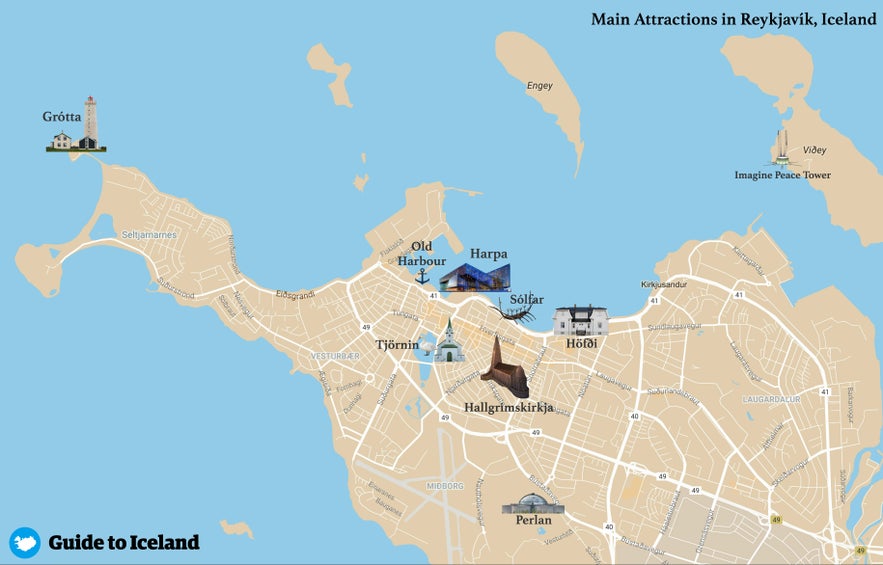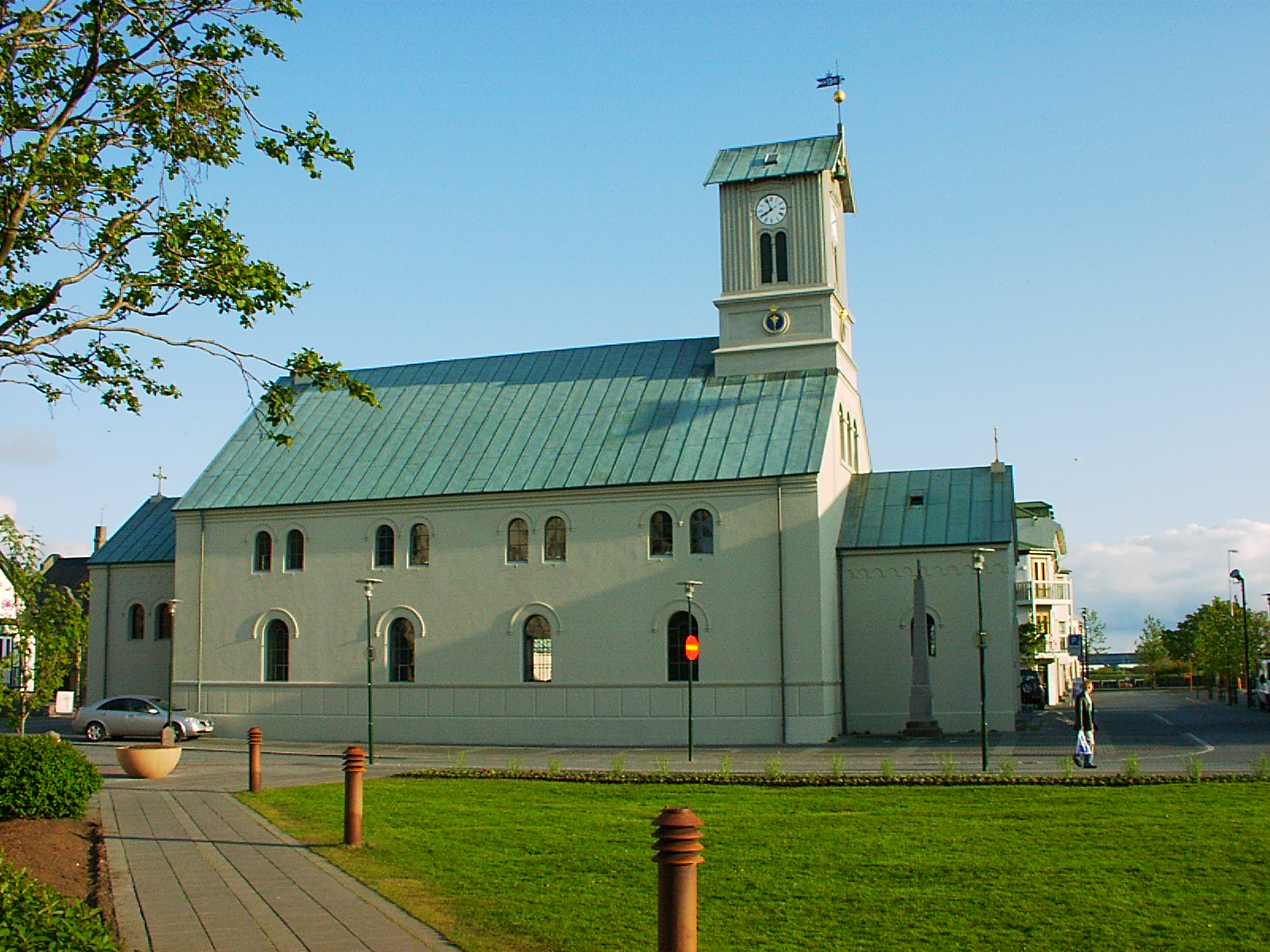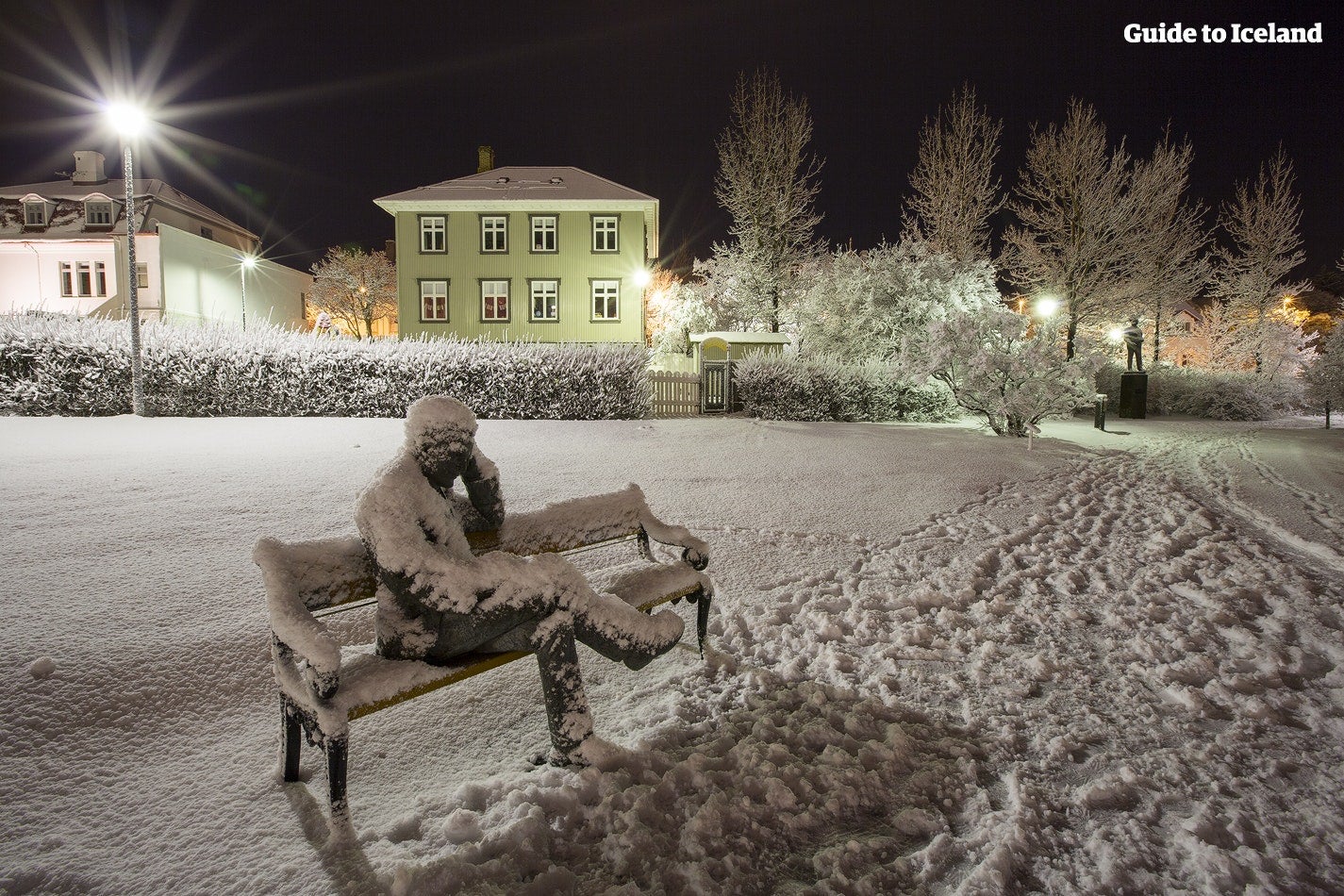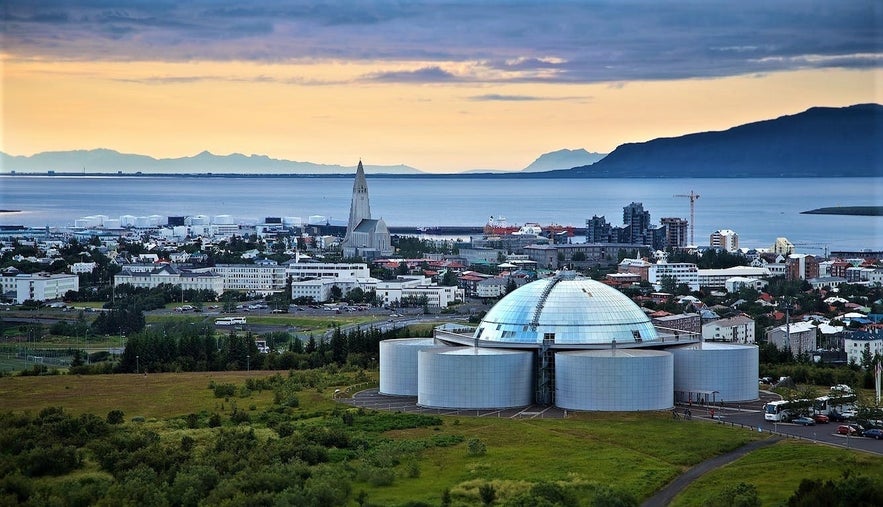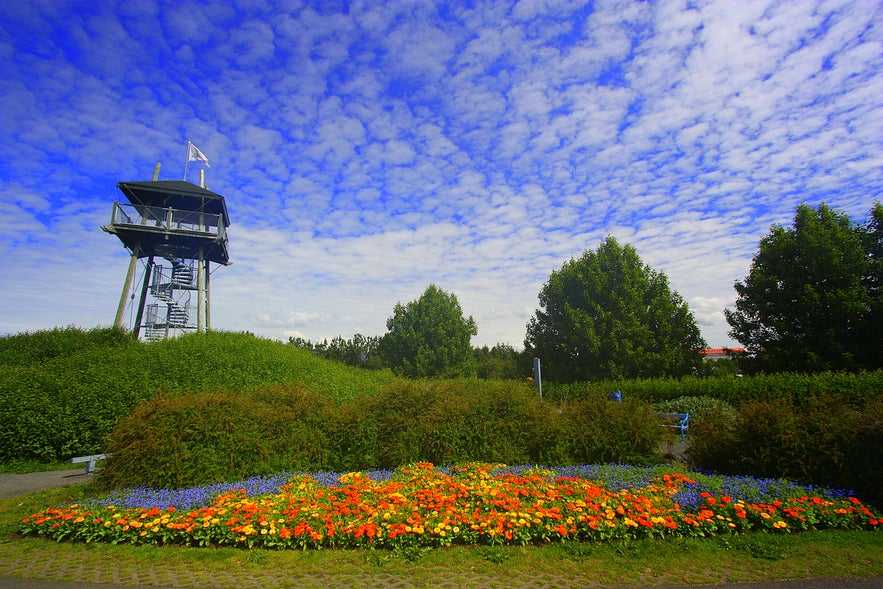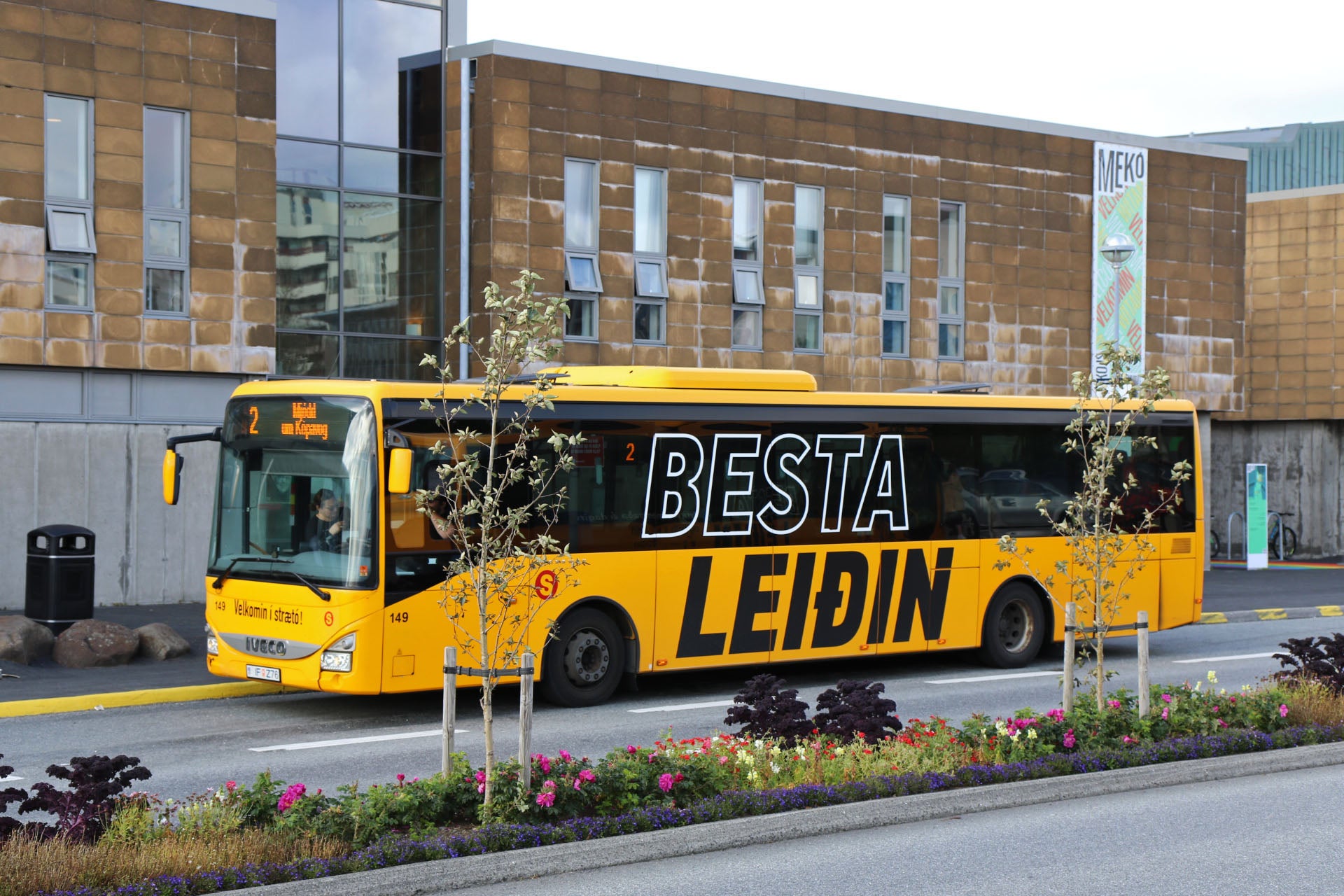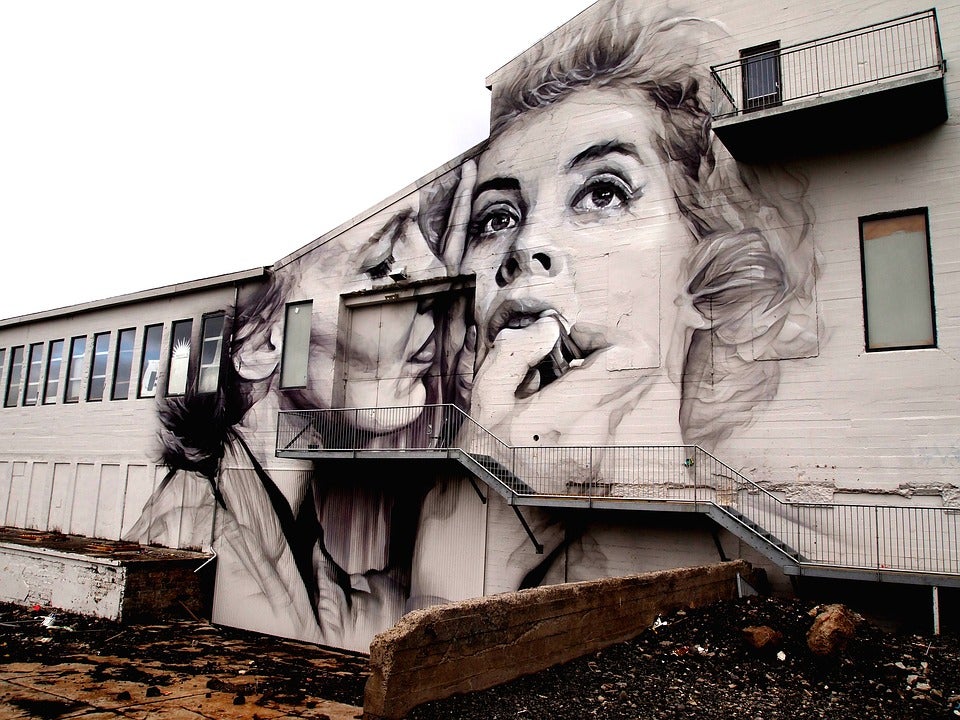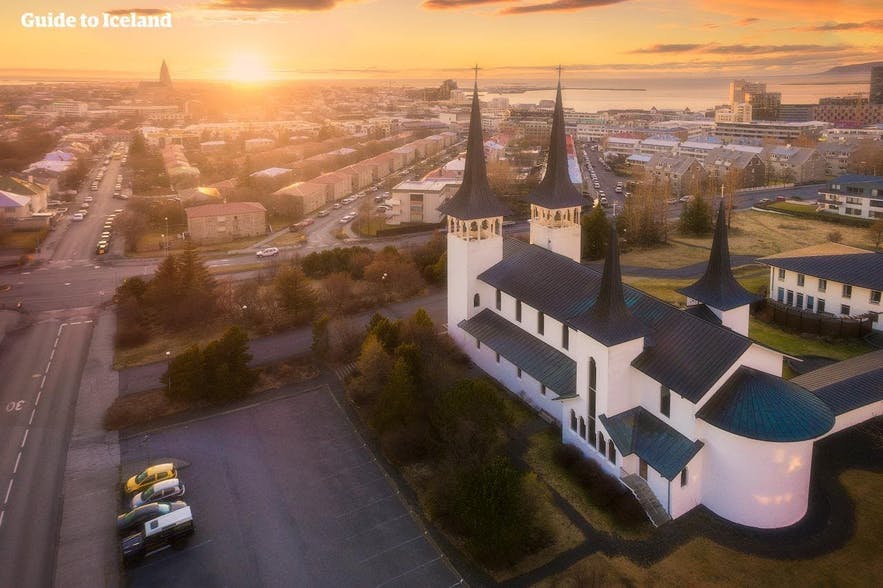
What are Reykjavik’s most iconic sites? Where can one find the best of the city’s art, history and culture? Read ahead for all you need to know about sightseeing in and around Iceland's vibrant capital.
Iceland is known across the world largely because of its nature: its northern lights, mighty glaciers, incredible waterfalls, beautiful Highlands, and, of course, explosive volcanoes. When most come to visit, therefore, they often cast little thought as to what they will do in Reykjavik.
Why You Can Trust Our Content
Guide to Iceland is the most trusted travel platform in Iceland, helping millions of visitors each year. All our content is written and reviewed by local experts who are deeply familiar with Iceland. You can count on us for accurate, up-to-date, and trustworthy travel advice.
The capital city, however, is full of surprises and attractions of its own that appeal to people with a wide variety of interests. We recommend booking a Reykjavik walking tour with an expert guide to get local insights into this charming city.
History buffs will be impressed by the city’s old buildings and the relics of its Viking and medieval past. The cultured will appreciate sites such as Harpa Concert Hall and Hallgrimskirkja Church.
Those with a passion for visual art will find a wealth of impressive statues, sculptures and street art throughout Reykjavik. Nature lovers will find they can observe plenty of spectacular landscapes without actually leaving the city.
It is not just the destinations of a sightseeing tour that make spending a day or more exploring Reykjavik so enjoyable. The city has a wonderful charm stemming from its many contrasts.
Old houses with colourful tin roofs surround new constructions that ooze modernity and sophistication. Narrow, hilly streets with cluttered buildings are broken up by wide green spaces, and quiet places where one can contemplate in peace are within easy walking distance of the thriving downtown area.
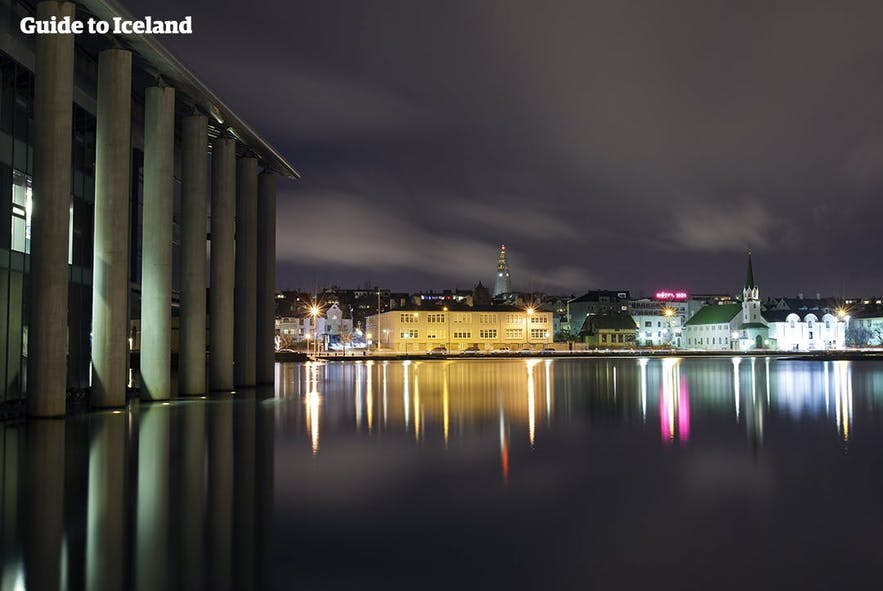
The capital feels both like a close-knit community and a forward-looking city. Other than its sites and natural charm, it welcomes visitors with its wealth of galleries, museums, boutiques, and bars, and constant live events and festivals. Reykjavik continues to ascend as one of the world’s foremost cultural capitals.
- See also: A History of Reykjavik
How to Sightsee around Reykjavik
There are multiple ways to enjoy the sites of Reykjavik, and the options are ever increasing with the growing number of visitors. Iceland welcomed over 2 million foreign overnight visitors in 2024, and 2025 is forecast to set a new record.
 Guided walking tours run throughout the year, which take you to a select list of iconic places. Many of these are free, although you can pay for a private tour and combine it with cultural activities such as beer tasting.
Guided walking tours run throughout the year, which take you to a select list of iconic places. Many of these are free, although you can pay for a private tour and combine it with cultural activities such as beer tasting.
There are hop-on, hop-off buses that you can use to reach a wider variety of destinations over a longer period of time.
If these options are not quite daring enough, there are a variety of flightseeing tours that provide you with a fascinating perspective of the city’s most iconic buildings and surrounding landscapes.
These exhilarating trips can be taken by helicopter or plane, and are as convenient as they are exciting, leaving from Reykjavik’s Domestic Airport throughout the year in favourable weather.
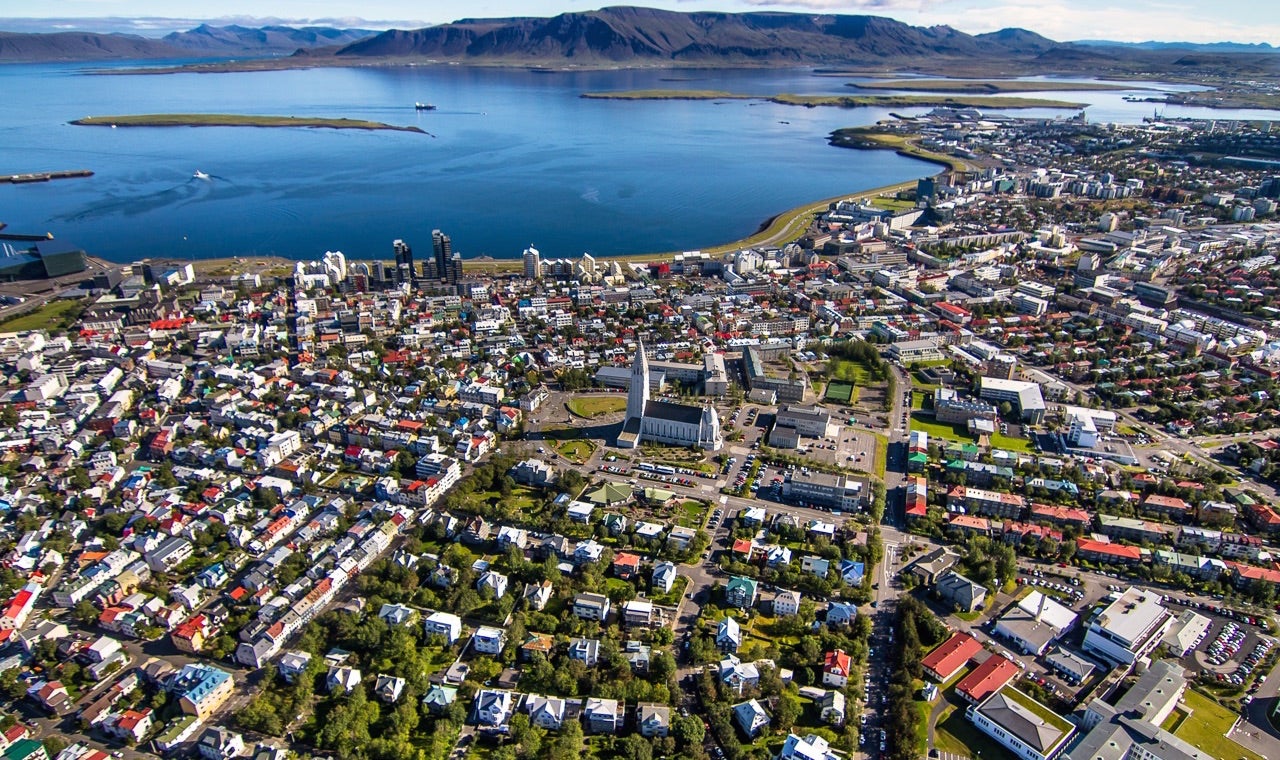
Historical Sites of Reykjavik
According to the Book of Settlements, Reykjavik has been inhabited since 874 AD. It therefore has a fascinating past that colours many of its most popular sites. Home to the house where the seeds to end the Cold War were planted, one of the world’s oldest parliaments, and 10th Century Viking ruins, Reykjavik has a wealth of locations that are sure to fascinate those with a passion for history.
Hofdi House
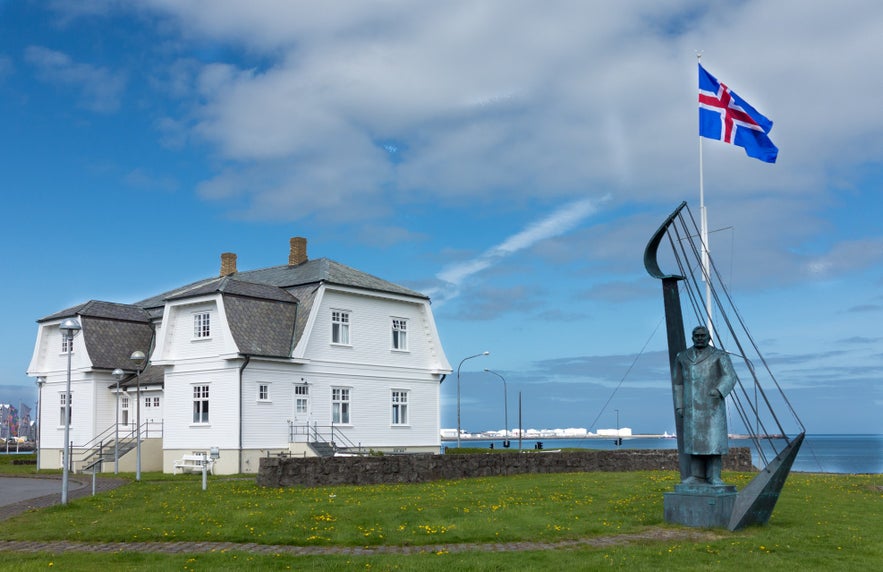
Hofdi House is one of the most internationally significant historical sites in Iceland. Originally the country’s French Consulate, in 1986, it took on a role far bigger than its humble appearance would lead you to believe. It was here that the Reykjavik Summit was held, where President Reagan and Secretary Gorbachev met to discuss an international ban on ballistic missiles during the Cold War.
While the talks fell apart, they showed each side the concessions that the other was willing to make, and thus the Summit in Hofdi House was crucial in the passing of the 1987 Intermediate-Range Nuclear Forces Treaty. Many also consider their meeting to be the beginning of the end of the Cold War.
The Althingi and Cathedral
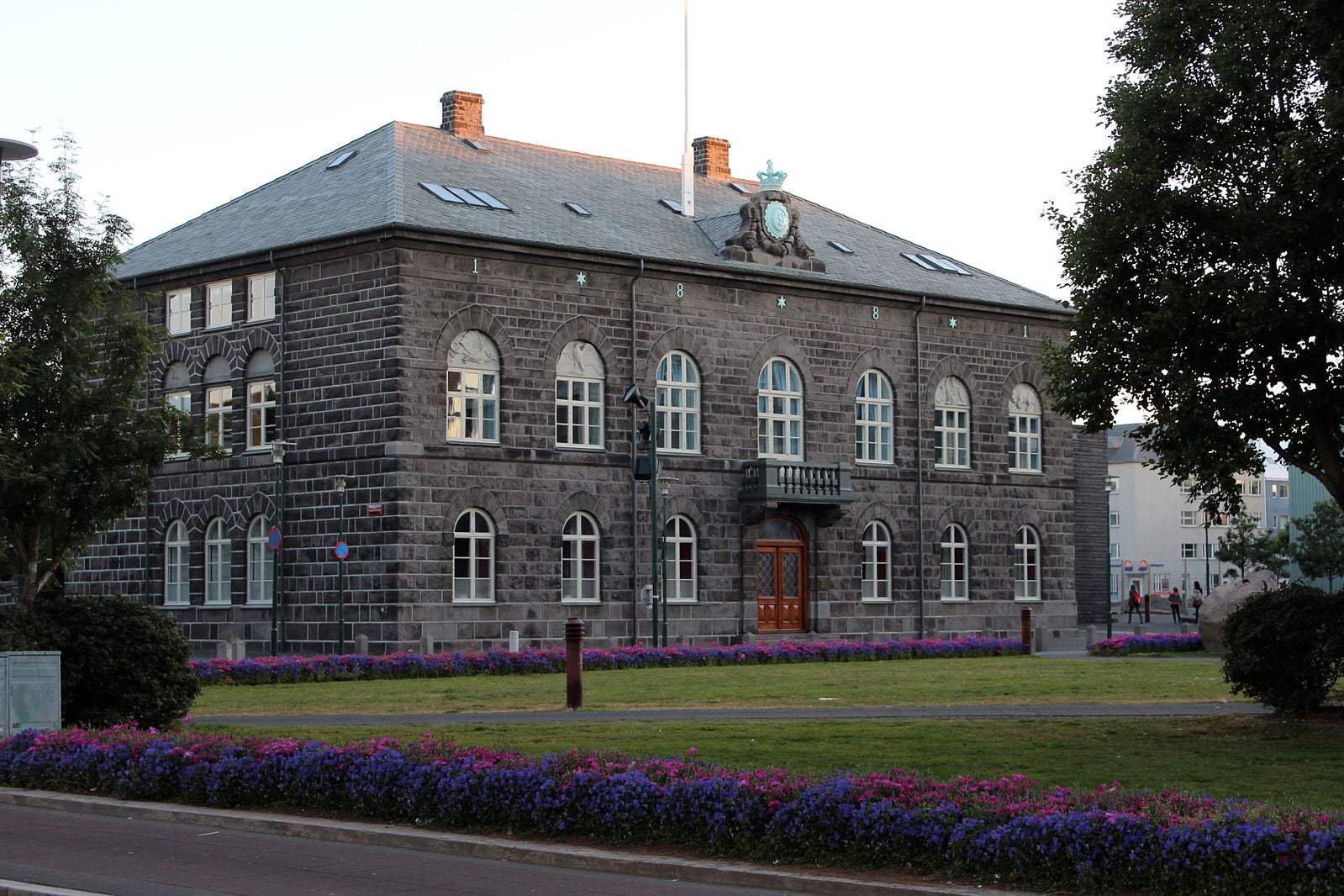
In the downtown area, you can find the Icelandic Parliament, the Althingi, and Reykjavik’s Cathedral right beside each other. The Parliament was brought here in 1849, centralising power in Iceland in Reykjavik after it had existed in Thingvellir National Park for over seven centuries.
Today the Althingi is widely cited as one of the world’s oldest surviving parliaments.
Photo from Wikimedia, Creative Commons, by JuTa. No edits made.
Reykjavik Cathedral is often overlooked, as many presume that its role belongs to Hallgrimskirkja, the church that dominates the city skyline. This quaint building, however, is Reykjavik’s oldest church, having been consecrated originally in 1796. It's simple Lutheran style speaks a story of Iceland’s religious history.
The Prime Minister’s Office and Menntaskólinn í Reykjavík
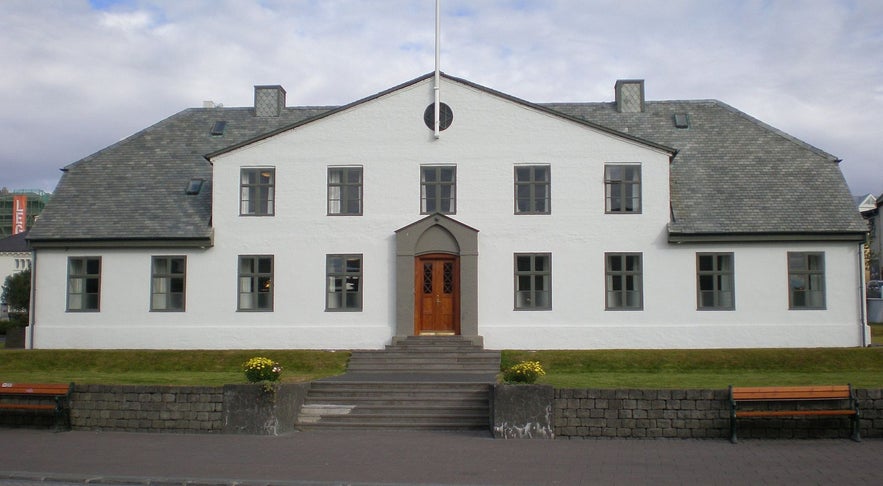
Photo from Wikimedia, Creative Commons, by Guðmundur D. Haraldsson. No edits made.
Stjórnarráðshúsið, on Laekjartorg right beside the downtown area, is the official Office of the Prime Minister and has been used as such since 1904. Located very centrally, and without fencing or visible security, the site speaks volumes of the safe and calm atmosphere of Iceland, or, when it is covered in toilet paper and graffiti, that the people are not happy with the incumbent.
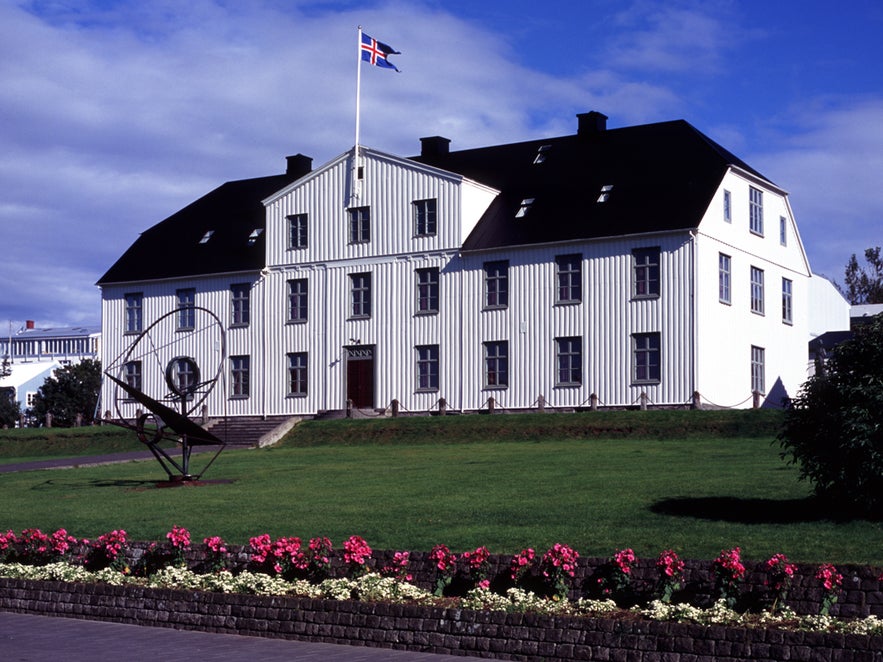
Photo from Wikimedia, Creative Commons, by Herbert G. No edits made.
The office is located on the same street as the oldest educational institute in Iceland, Menntaskólinn í Reykjavík. This school was established in 1056, in the Episcopal See of Skalholt, moved to Reykjavik in 1786, and settled on its current site in 1846.
The Longhouse Ruins
Although this list will avoid museums as sightseeing sites, Reykjavik’s Settlement Exhibition must be an exception, as it should not be missed by those with a passion for history. Within it, you can look upon the archaeological relics of the oldest settlement found in the Reykjavik area, with some pieces dating back to the 9th Century.
There is also a well-preserved hall and wall fragment from a 10th-century longhouse. Admission for adults is currently 2,900 ISK (21 USD), free for under-18s, with daily opening generally 10:00-17:00. Your visit also connects underground to the newer city-history exhibit at Adalstraeti 10. It is located on Adalstraeti, the oldest street in Reykjavik, which has buildings dating back to the mid-18th Century.
- See here for the Top Museums in Reykjavik
Laugavegur Street
Laugavegur Street is Reykjavik's main shopping street, renowned for its boutiques, restaurants and bars, and one of the city’s oldest thoroughfares. Its name translates to Wash Road, as it led to the hot springs in Laugardalur where people laundered clothes in earlier times.
The road itself was constructed in 1885, and still has several historic venues along it, such as one of Reykjavik’s oldest cafés, Prikið (est. 1951). Recent years have seen more pedestrian-friendly streets connecting with Laugavegur and Austurstraeti Street, creating long car-free stretches that are especially lively in summer.
- See also the Top 9 Most Famous Icelanders in History
- Check out our review of Prikið in Reykjavik
Cultural Sites of Reykjavik
In the 20th and 21st Centuries, Reykjavik's culture exploded. Prior to World War Two, the city was rather barren of any notable places, be they beautiful buildings or venues where people could enjoy the arts and socialise. With the post-war development and later focus on tourism, however, Reykjavik developed incredibly rapidly, to the extent that it was named one of nine European Cities of Culture in 2000.
Hallgrimskirkja Church
 Hallgrimskirkja is probably Reykjavik’s most iconic building. At 74.5 metres high, it is one of the country’s tallest structures, and its position atop the hill only adds to its scale. This Lutheran Church was consecrated in 1986 after 41 years of construction and was named after the 17th-century Icelandic poet and clergyman Hallgrímur Pétursson.
Hallgrimskirkja is probably Reykjavik’s most iconic building. At 74.5 metres high, it is one of the country’s tallest structures, and its position atop the hill only adds to its scale. This Lutheran Church was consecrated in 1986 after 41 years of construction and was named after the 17th-century Icelandic poet and clergyman Hallgrímur Pétursson.
The beauty of this church largely comes from the inspiration in its aesthetic. Classically Icelandic, its three main influences are the simplicity of Protestant design, the hexagonal basalt columns that can be found across the country, most significantly those at Svartifoss Waterfall, and the shape of the hammer of Thor, the Old Norse God of Thunder.
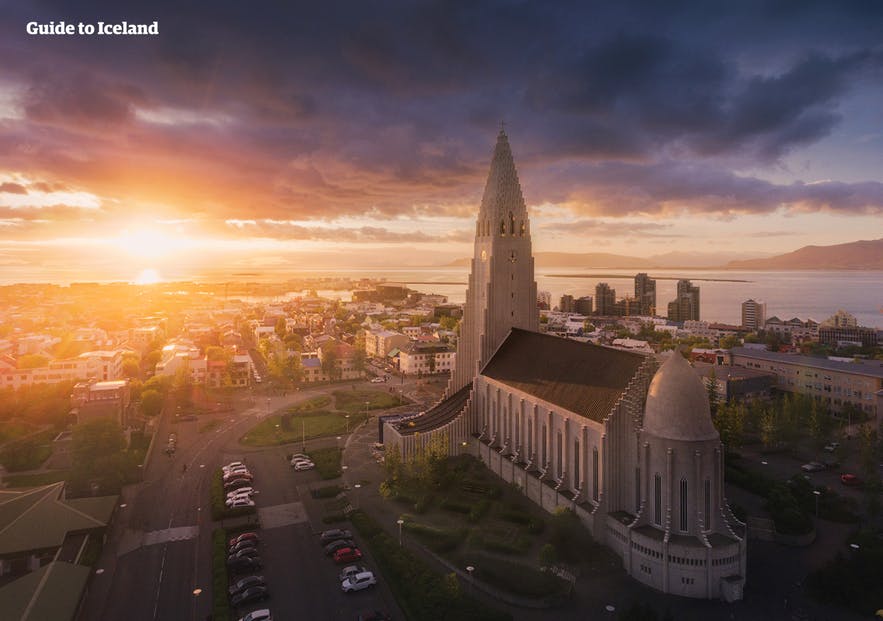
The church can be entered for free. Its vast hall, enormous organ, and tasteful art make it a beautiful location. The tower can be ascended too for panoramic views.
Current ticket prices: adults 1,400 ISK (10 USD); children 7-16: 200 ISK (1.5 USD), with discounts for seniors, students, and people with disabilities. Hours vary seasonally, and the tower closes during services.
Harpa Concert Hall
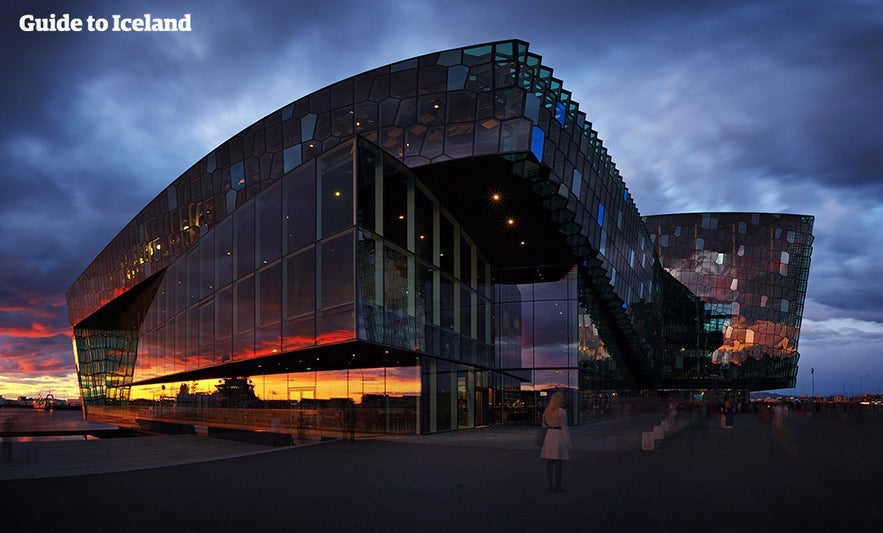
Inside, the acoustics are world-class, home to the Iceland Symphony Orchestra and a year-round program from classical concerts to comedy.
Annual highlights include the Iceland Airwaves festival in early November, the contemporary music Dark Music Days in January, and the Reykjavik Jazz Festival each August.
- See here for the Top 10 Festivals in Iceland
National Theatre of Iceland
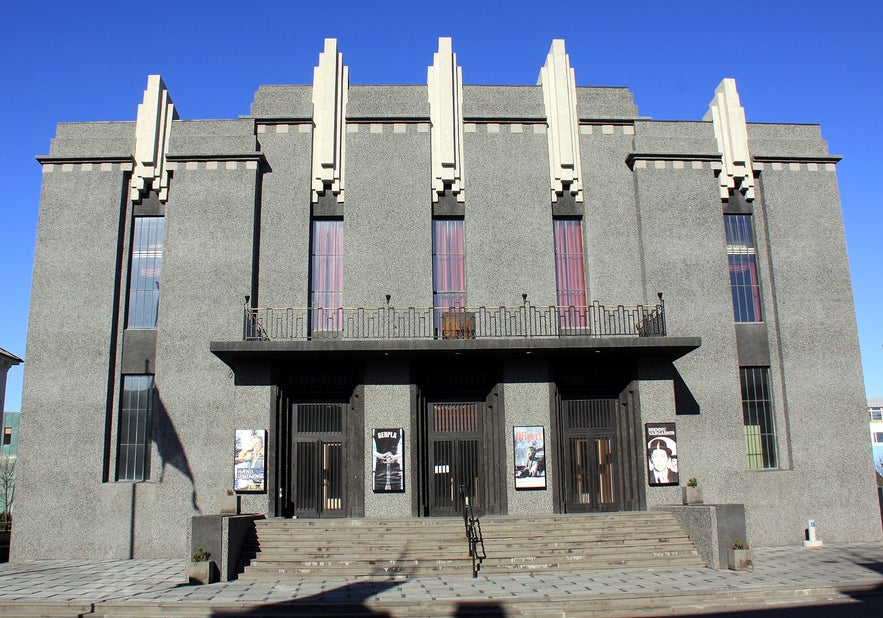
The National Theatre of Iceland opened in 1950 and is known for its unusual architecture and incredible performances. While most are in Icelandic, the venue also hosts shows in English, both old and new, as well as puppet shows and shows for children. Many of the acts that debuted here have won national and international awards and have gone on to tour the world.
- See here for the Top 10 Things to Do in Reykjavik
Art Sites of Reykjavik
Many of the most notable subjects of sightseeing around Reykjavik are the pieces of art on public display. From historical statues to murals that cover the walls of buildings, Reykjavik is a city of artistic craftsmanship that pays tribute to the skills and hard work of its people. Those with an eye for such talent will be mesmerized by the works on display as they visit the following sites across the capital.
The Sun Voyager
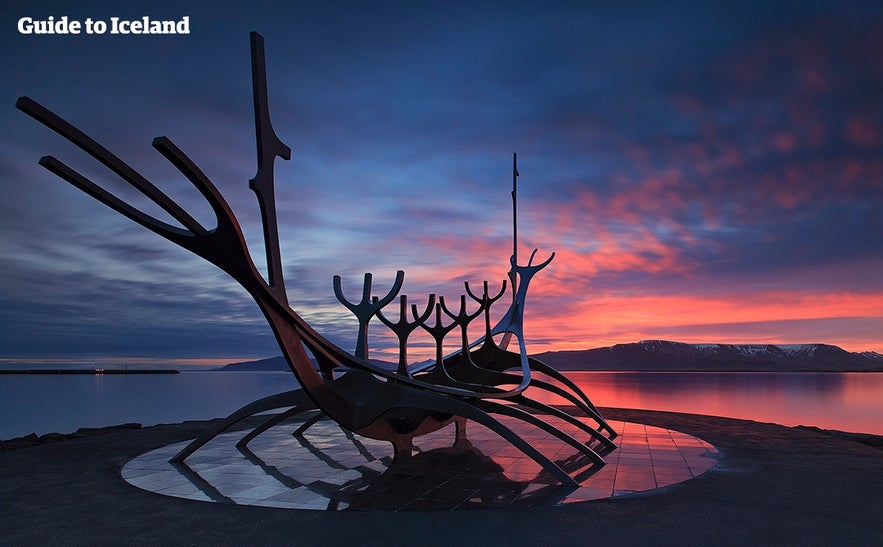
The Sun Voyager started as a design entered into a 1986 competition for a piece to commemorate Reykjavik’s 200th anniversary. It was unveiled on the city’s birthday, August 18, 1990. Sadly, Gunnar did not live to see its grand unveiling, but the mark and message he left upon the city with this sculpture mean he will not be forgotten.
Einar Jónsson Sculpture Garden
Einar Jónsson was one of Iceland’s most talented and groundbreaking artists. Born in 1874, he spent twenty years abroad learning sculpture, an art form barely known in Iceland at the time. Critical of copying other artists and passionate about carving a unique path in the craft, he made such a name for himself internationally that the Althingi invited him back home to work for the nation, providing him with a studio and a home.
Until 1954, he created incredible artworks, usually made from plaster, which could take him up to a decade to complete. The majority of his works are now held at the Einar Jónsson Museum and Sculpture Garden, right beside Hallgrimskirkja Church. The garden is free to enter, and a walk through here is sure to mesmerise any with a knowledge of or passion for incredible artistic craftsmanship.
The Einar Jónsson Museum can be found on site; admission for adults is 1,500 ISK (11 USD), free for under-18s.
Other Sculptures
Since Einar Jónsson, sculpture has become much more common an art form in Iceland. Even so, he created some of the most notable works dotted around the city. He, for example, sculpted the statues outside the Office of the Prime Minister, of Danish King Christian IX handing the Icelandic nation their first constitution, and Hannes Hafstein, the first minister after Iceland gained Home Rule. He also made the statue of Reykjavik’s founder, Ingólfur Arnarson, which stands on Arnarholl Hill overlooking downtown.
Many other artists have contributed to the sculptures of famous historical figures, however. Hallgrimskirkja, for example, has a sculpture of Leif Eriksson in front of it, the first European to reach the Americas, which was gifted by the USA in 1930. The poet Tómas Guðmundsson sits on a bench downtown, created by Halla Gunnarsdóttir.
There are also pieces made to represent modern everyday folk, such as the sculptures Son, Girl, and The Musician, by Ólöf Pálsdóttir, and historical everyday people. The most notable of these is the Water Carrier by Ásmundur Sveinsson, which represents the women who carried water up and down Laugavegur from Settlement.

Not all the sculptures simply represent people, however. Some are abstract, such as Gerður Helgadóttir’s twisted piece simply called Sculpture. Others are political, such as Magnús Tómasson’s Monument to an Unknown Bureaucrat. The 2012 Black Cone, Monument to Civil Disobedience, by Santiago Sierra, celebrates grassroots power breaking through corruption by showing a small metal cone cracking apart a great rock.
Reykjavik Street Art
One of the highlights of sightseeing around Reykjavik is the wealth of vibrant street art that decorates the city. Inspired by music, Icelandic folklore, and imagination, many walls are beautifully painted.
Note that the scene is dynamic: numerous works created for the 2015 WALL-POETRY project remain, while others have been replaced as buildings change or are redeveloped. The city now maps over 160 street-art works and updates that map regularly.
- See also: Graffiti and Street Art in Reykjavik
Possibly the most well-known and beloved street art, however, has been featured around the historic Old Harbour since 2013. Australian artist Guido van Helten painted vintage, photo-style images on the crumbling walls, transforming one of Reykjavik’s most dilapidated areas into one of its most celebrated.
- See here for Art Galleries in Reykjavik
Nature Sites of Reykjavik
Though a capital city, Reykjavik is immersed in Icelandic nature. On clear days, there are many points where one can look over the barren, volcanic landscapes of the Reykjanes Peninsula, the snow-capped peaks of the Snaefellsnes Peninsula, and the daunting shadows of Blafjoll, the Blue Mountains. Furthermore, the city has plenty of green spaces where one can escape the busy center.
Grotta Lighthouse
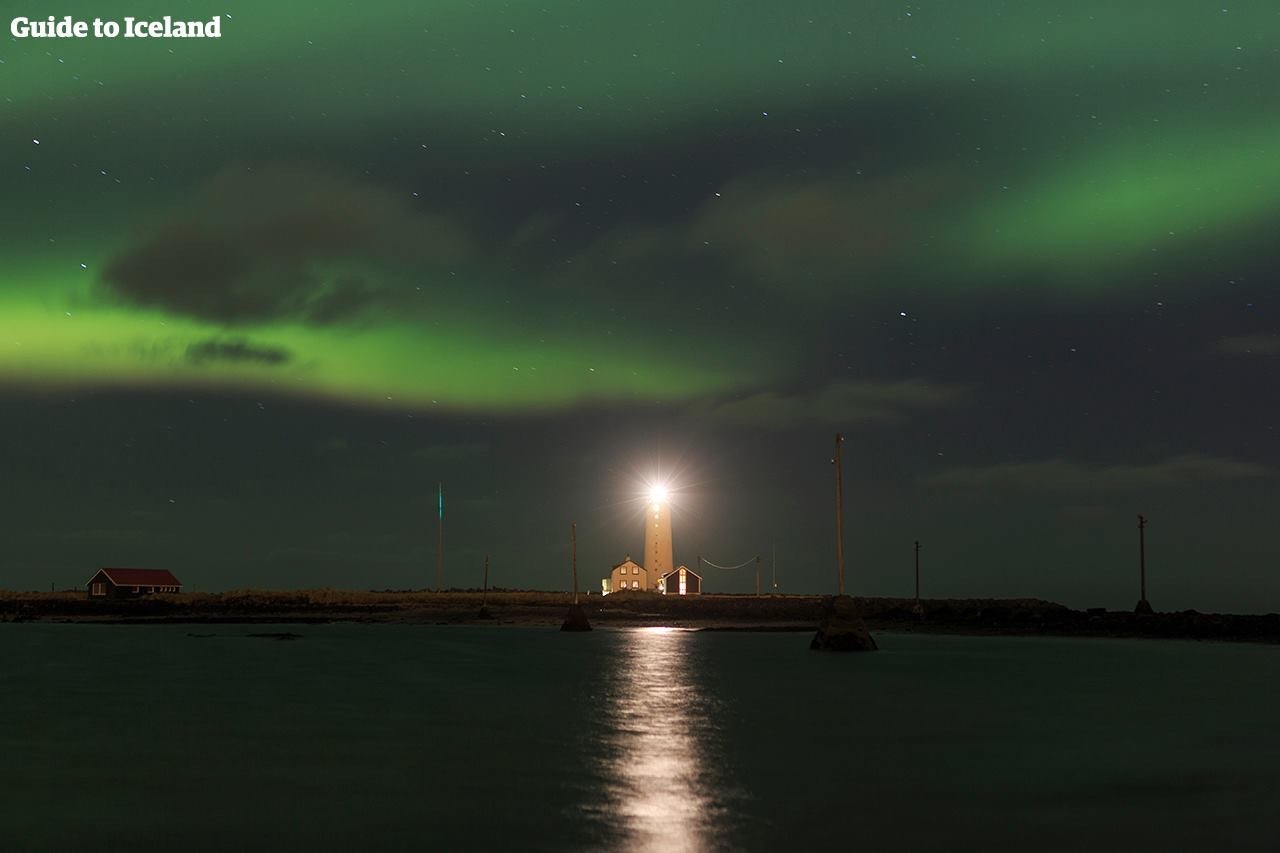
The area is especially worth visiting at sunrise or sunset, and during clear winter nights for a great shot at seeing the northern lights. There is a small geothermal footbath called Kvika where you can warm your feet as you unwind. You can walk the sandbar to the lighthouse only at low tide, and access to the nature reserve is forbidden during the nesting season, May 1 to July 15, so plan accordingly.
Perlan and Oskjuhlid
Along with Hallgrimskirkja and Harpa, Perlan, or the Pearl, is one of the most iconic structures in Reykjavik. Perched atop a forested hill called Oskjuhlid, it is a dome-shaped building that once featured a rotating restaurant at its top.
To access the observation deck, you'll need to purchase exhibition tickets for the Wonders of Iceland experience, which features a walk-through ice cave, a volcano experience, and the Áróra northern lights planetarium film. The panoramic views over the forest, city, coastline, and surrounding mountains make it well worth it.
The forest of Oskjuhlid is a perfect place within Reykjavik to escape the city noise. Densely packed trees block out signs of urban life, and there are many pleasant hiking trails winding through the area.
Some of these lead to old World War Two fortifications that were, thankfully, never used. Others lead to a Temple of Asatru, the religion of the Old Norse Gods. Just below the forest is the man-made beach of Nautholsvik, which is geothermally heated in parts during summer and offers changing facilities, hot tubs and a steam-bath with seasonal hours.
Laugardalur Park
Photo from Wikimedia, Creative Commons, by Helgi Haldórsson. No edits made.
Laugardalur Park is a large green space within the city, with many attractions to draw the sightseer in Reykjavik. It features a botanical garden, with a wide variety of Arctic flowers and plants, that is open throughout the year but best visited in summer when it is in bloom. The Family Park and Zoo are open year-round and have a host of Icelandic animals to admire, including Arctic Fox and reindeer.
The park is also home to Laugardalslaug, the largest pool in Reykjavik, with slides, hot pools, saunas, steam rooms, and ample swimming areas. A visit to Laugardalur allows you to immerse yourself in the flora and fauna of Iceland, as well as to enjoy its geothermal activity, without leaving the city.
Videy Island
 The final sightseeing destination on this list requires a boat to access, but is a lovely experience for those who seek natural tranquillity, as well as a bit of history and culture. Boats to Videy, an island just off Reykjavik’s coast, depart daily in summer and on weekends in winter. Return tickets are available from Skarfabakki year-round, with extra departures from the Old Harbour in peak summer.
The final sightseeing destination on this list requires a boat to access, but is a lovely experience for those who seek natural tranquillity, as well as a bit of history and culture. Boats to Videy, an island just off Reykjavik’s coast, depart daily in summer and on weekends in winter. Return tickets are available from Skarfabakki year-round, with extra departures from the Old Harbour in peak summer.
The island is uninhabited now, but it still has plenty to entertain visitors. Ruins from when it was settled still dot the island, which you are free to wander through, and the buildings still standing have a significant past. The church on the island is one of the oldest stone churches in the country, and Videy House, 1755, is Iceland’s oldest stone residence.
Videy is also home to two significant art projects. Richard Serra’s Milestone Project has stood here since 1990. More recently, and more famously, the island became home to Yoko Ono’s Imagine Peace Tower, which casts a beam of light into the night sky at specific times of year.
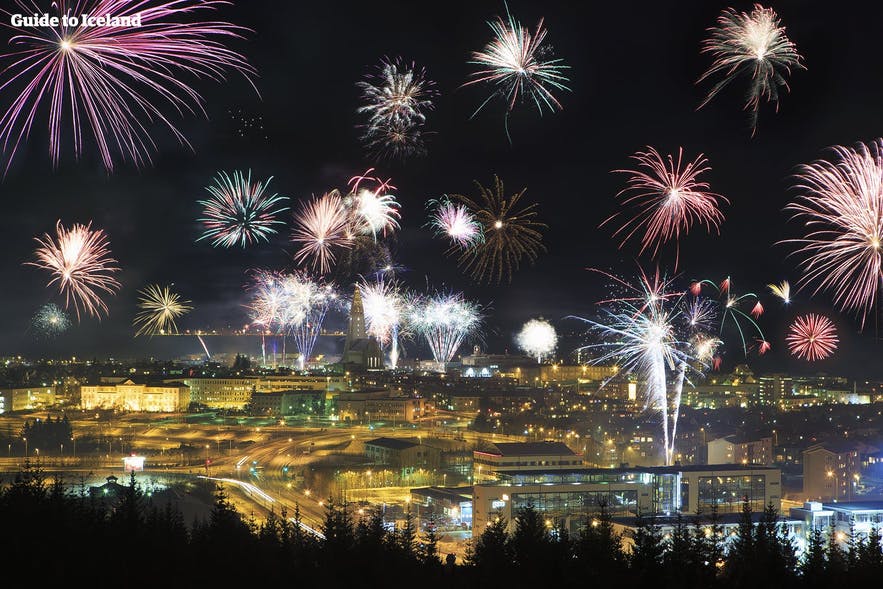 Reykjavik has become a vibrant, modern, unique city. With a wealth of history, culture, art and nature, its sites appeal to people of all interests. As more and more people come to visit, it continues to improve, grow and thrive.
Reykjavik has become a vibrant, modern, unique city. With a wealth of history, culture, art and nature, its sites appeal to people of all interests. As more and more people come to visit, it continues to improve, grow and thrive.
- See also: Top 10 Things to Do in Reykjavik

